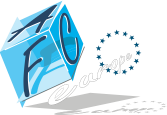
 |
Consulting case studies |
The mission was to implement a bank account printing framework for large insurances and bank
Audit of a large project for motorway distributed warning and operation monitoring
The mission was to put on track an overscheduled project, disseminated in several distant corporate sites.
At the beginning much discussion was around language and developers, understanding between business analysts and programmers ; whereas it was discovered a true database was missing, and the real problem was a business one, not a tooling one :
A database instance was launched served through a Tomcat server. People were trained into converting Excel sheets into database tables through a web server interface using Java Standard Tag Library.
A parametric model was designed, allowing edition of new equations. A market survey convinced no other commercial tools would match the needs. Corporate firewall issues are still unsolved.
The mission was to answer the following questions for the customer :
The customer architecture included J2EE n-tier architecture with a mainframe, as well as legacy code.
The mission went through several days of interviews with the developers, tool demos and report reading. Outside of organizational issues, the conclusion was basically as follows :
A final report was written together with detailed technical cards for further projects.
This study could be labeled as "technology brokerage". This customer was using a large library of Fortran code, with migration issues from Unix to PCs. Of course, the code knowledge was gone for the most of it, and porting to other languages could yield uncontrolled rounding errors and model deviations.
The mission was split in several actions along time to identifiy single problems and act locally. Many technical solutions were listed, such as buying new graphics library, interfacing the code with Java, using SVG, etc.
The final solution allowed the research center to share software with distant units in the world, without endangering their know-how. There were also autonomous with the new tools, and spared a significant amount of money on useless licences.
Each mission tailors a solution to the needs of a specific customer without any religion regarding tools, frameworks or languages. The only criterias are simplicity, cost, and team empowerment. This is to be constrasted with usual consulting approaches that impose fashionable frameworks disregarding the entreprise reality or needs.
© Copyright AFC Europe 1998-2014